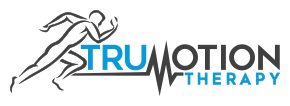April 8th, 2020
Shin splints, also called “Medial Tibial Stress Syndrome,‚ÄĚ is caused when the muscles of your lower leg pull too hard on your bone, causing local pain and inflammation. Over half of all leg pain in athletes is caused from shin splints. Up to 1/3 of runners and soldiers experience shin splints at some point in their lifetime.
Shin splints is an overuse injury frequently seen in sports involving running, jumping, or frequent stopping & starting, i.e. field hockey, soccer and cross-country. Shin splints do not occur overnight but over a period of time, often showing up during the first two or three weeks of training for a new season. Shin splints can occur when there are changes to your exercise regimen, such as an increase in activity, change in shoes or a change in the surface you play on. Some doctors refer to these training areas as “the terrible toos,” ‚ÄĒ too much, too hard, too long, too fast.
Symptoms of shin splints include tenderness or pain over the inside lower portion of your shin. The discomfort begins at the start of exercise and eases as you continue. Some patients report “bumps” when touching the inner portion of their leg bone. Be sure to tell your doctor if you experience weakness, numbness or cold feet during exercise or find a very small area of sensitivity.
Unfortunately, shin splints usually develop during a time when you are training heavily for a sport or an upcoming event. Continuing this activity will often lead to ongoing problems and decreased performance. Shin splints are now believed to be a precursor to stress fracture, so adequate rest is critical. You may need to consider non-weight bearing cross training, such as using a stationary cycle or pool running.
Sports creams and home ice massage may provide some relief. Use ice after any activity. Patients who have flat feet are predisposed to developing shin splints and may need arch supports or orthotics. Avoid using heel cushions in your shoes, as they may increase the recurrence of this problem.
Our Approach to Treating Shin Splints:
Many athletes in Charlotte have found relief from shin splints through chiropractic, manual therapy, and corrective exercise here at TruMotion Therapy.  Since each person is unique, an individual approach is taken with each patient.  Listed below is our general approach at providing shin splint relief.
- Reduce pain and inflammation. This can be accomplished with laser therapy, gentle soft tissue work, and kinesiology taping.
- Loosen the joints in the feet and ankles. Chiropractic adjustments are effective at restoring proper mobility in stuck joints, which can improve biomechanics.
- Corrective exercise and stretches help restore balance and alignment in the body to help ease pain and prevent it from recurring.
- Address training volume and other factors including footwear and running gait.
If you live in or around the Charlotte area and are experiencing shin splints that don’t seem to get better, click here to work with our team and begin finding relief.





